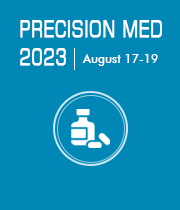Diabetic Medicine
Drugs for diabetes are used to treat diabetes mellitus by lowering blood glucose levels. With the exception of insulin, most GLP receptor agonists (liraglutide, exenatide, and others), as well as pramlintide, are all taken orally and are hence referred to as oral hypoglycemic or antihyperglycemic medications. Anti-diabetic medications are divided into numerous classes, and their use is determined by the type of diabetes, the person's age and circumstances, and other considerations. Diabetes mellitus type 1 is an insulin-deficiency disorder. Type 1 diabetes necessitates the use of insulin, which must be administered. Diabetes mellitus type 2 is a condition in which cells become resistant to insulin. The most frequent type of diabetes is type 2 diabetes mellitus. Agents that enhance the quantity of insulin secreted by the pancreas, increase the sensitivity of target organs to insulin, slow the absorption of glucose from the gastrointestinal tract, and accelerate glucose excretion through urination are among the treatments.
- Patient Engagement
- Clinical Translation
- Clinical Trials
- Diabetes Management
- Pancreas and Insulin

Bernd Blobel
University of Regensburg, Germany
Roy Gary Beran
University of New South Wales, Australia
Matthias Schwab
University of Tubingen, Germany
Thomas Webster
Interstellar Therapeutics, United States
Boris Tankhilevich
Magtera, Inc., United States
Isabella Friis Jorgensen
University of Copenhagen, Denmark


Title : The use of anti seizure medication therapeutic blood level determination to personalise the treatment of epileptic seizures especially in patients attending the accident and emergency department
Roy Gary Beran, University of New South Wales, Australia
Title : Personalized and precision medicine (PPM) can be established as a unique healthcare model through biodesign-driven and inspired biotech, translational applications. This approach aims to ensure human healthcare, wellness, and biosafety.
Sergey Suchkov, Institute for Biotech & Global Health of RosBioTech and A.I. Evdokimov MGMSU, Russian Federation
Title : Monitoring folds localization in ultra-thin transition metal dichalcogenides using optical harmonic generation
Ahmed Raza Khan, Australian National University, Australia
Title : A systematic review of regulatory approaches for Direct- To- Consumers (DTC) genetic testing
Kavitha Palaniappan, Duke-NUS Medical School, Singapore
Title : Regulatory framework of in vitro diagnostic and artificial intelligence for precision medicine
Pei Ting Sarah Chou, Regulatory Affairs Professionals Society, Taiwan
Title : Unraveling cancer stem cell signatures in circulating tumor cells of metastatic colorectal cancer: Investigating ALDH1A1 and the repurposing potential of disulfiram via scRNA-seq
Nurul Syakima Ab Mutalib, Universiti Kebangsaan Malaysia, Malaysia